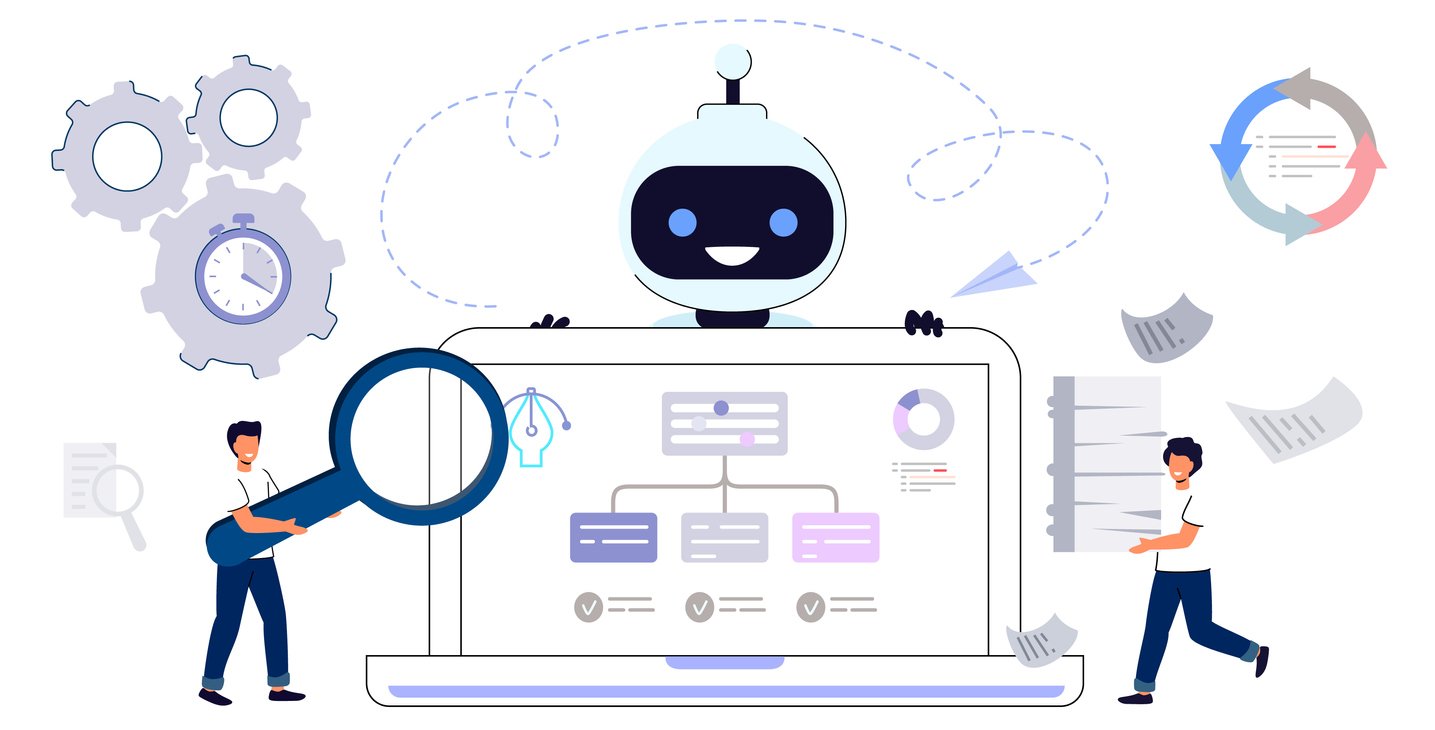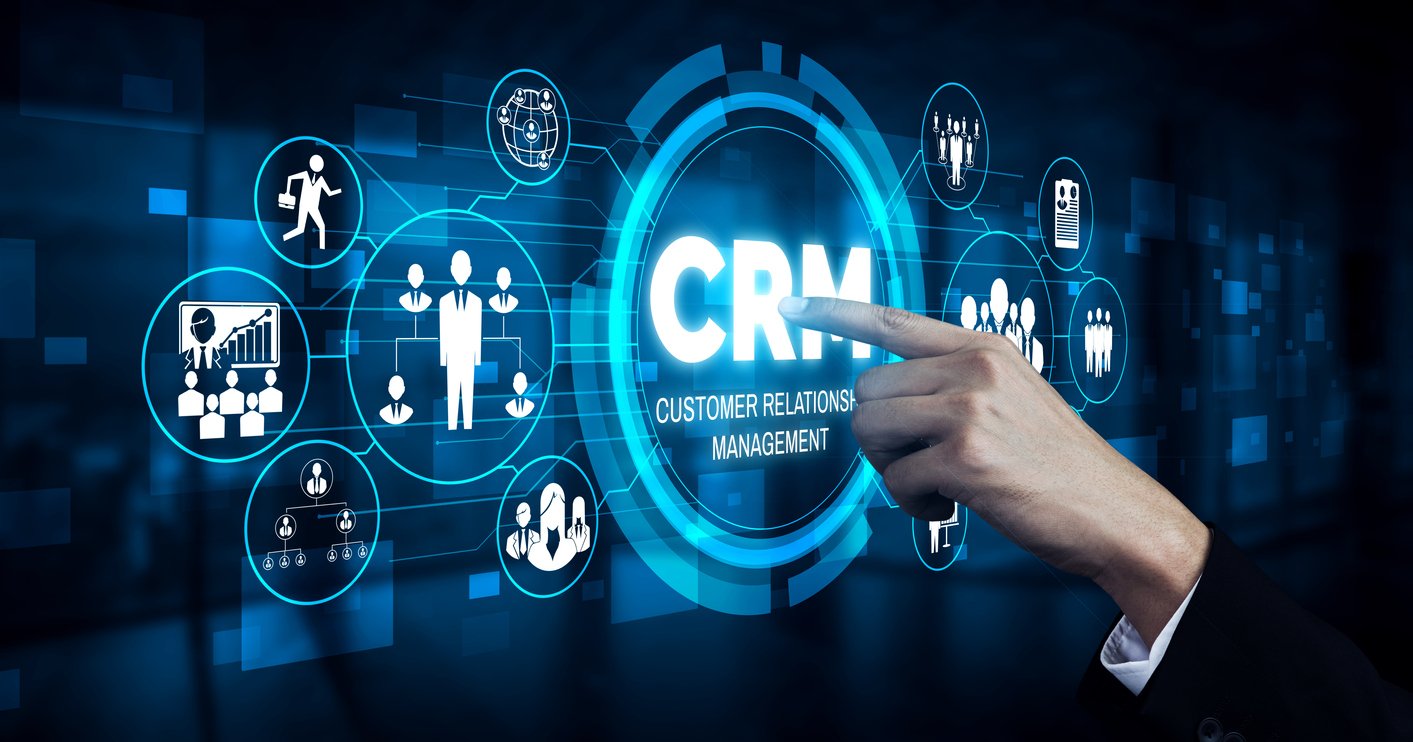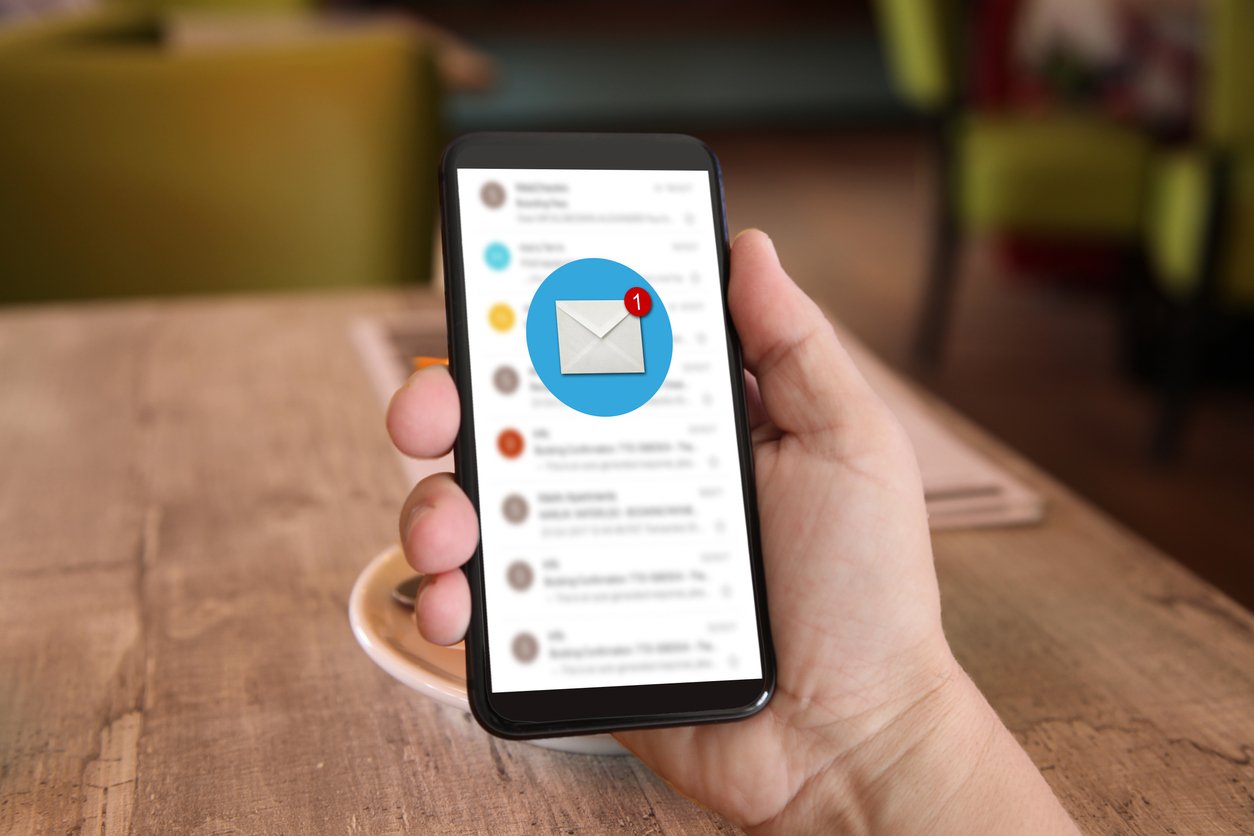
Top 4 Lead Automation Tools to Streamline Your Leads Touchpoints
 Updated on
Updated on
 By Bradley Kovacs
By Bradley Kovacs
Bradley Kovacs
Bradley has been passionate about technology since childhood, starting with Microsoft Flight Simulator at age six. In college, he automated his data e...
learn more
Bradley Kovacs
Bradley has been passionate about technology since childhood, starting with Microsoft Flight Simulator at age six. In college, he automated his data e...
Table of Contents
Table of Contents
Between prospecting for leads, gathering leads, trying to organize them, qualifying the good ones, making calls, filling the funnel, managing the sales pipeline, closing sales, going to the gym, staying on top of personal stuff, and feeding the farm animals…
Being a sales rep is challenging, fast-paced work that can leave you feeling a bit like this guy chasing his lead here.
Around and around you go, never knowing if you'll catch that lead or not.
What if we said you could cut to the chase and streamline this dizzying process of gathering quality leads and managing sales touches to gain exposure, connect with the right prospects faster, and increase both sales + ROIs?
(And, of course, make more time for feeding the farm animals).
Because you can, with the right lead automation tools.
Sounds crazy?
It's not. Here's what you'll learn:
- What lead generation automation is
- Types of lead automation software
- Difference between lead nurturing automation and lead generation automation
- How lead automation tools streamline sales touchpoints
- Key considerations when choosing lead automation software
- Which software tools are best?
What is Lead Generation Automation?
Lead generation automation refers to the use of technology and software tools to capture, nurture, and convert potential customers (leads) into paying clients without constant manual input.
At its core, lead automation streamlines the entire customer acquisition process by leveraging data-driven workflows, artificial intelligence, and real-time analytics.
These tools are designed to handle various stages of the funnel: from lead capturing through web forms, chatbots, or landing pages, to lead nurturing automation via personalized email sequences, retargeting ads, and SMS follow-ups.
Once engaged, prospects are scored and segmented automatically for targeted outreach, making sales lead automation a seamless extension of the marketing team.
Advanced marketing automation lead generation software can increase lead conversion rates by up to 77%, according to Invesp, by delivering timely, relevant content that guides users toward a purchase.
In addition, companies using lead management automation see a 10% or greater increase in revenue within 6-9 months, as per HubSpot. Therefore, tools focused on lead generation automation not only save time but also ensure no opportunity falls through the cracks, making them indispensable for scaling marketing and sales operations.
Types of Sales Lead Automation Software

Types of sales lead automation software depend on your business. What are you selling, and who are you selling to?
1. All-In-One CRMs (e.g. Ringy)
Customer Relationship Management (CRM) platforms are often the foundation of any successful lead management automation strategy. Tools like Ringy, HubSpot, and Zoho CRM serve as centralized systems that capture, score, segment, and nurture leads automatically.
Key features to look for in all-in-one CRMs:
- Lead Generation Automation: Integration with landing pages, forms, and survey tools to capture and funnel data into the CRM.
- Lead Scoring and Segmentation: Automatically ranks leads based on engagement, fit, and behavior.
- Analytics and Reporting: Tracks conversion metrics, pipeline health, and engagement trends.
- Call Tracking and Dialers: Built-in or integrated dialers help automate phone outreach while logging activity back to the lead record.
2. Email Automation Platforms
Despite the buzz around social platforms, email marketing automation remains one of the most powerful lead nurturing automation tools. In fact, email is nearly 40 times more effective at acquiring new customers than Social Media platforms.
Here's how they do it.
Email automation platforms automate personalized drip sequences, follow-ups, re-engagement campaigns, and newsletters—all based on user behavior or lead stage. Examples include Mailchimp, ActiveCampaign, and Klaviyo.
Benefits include:
- Behavior-based triggers (e.g., sending a sequence after a download)
- Segmentation by industry, lifecycle stage, or buyer intent
- Detailed metrics like open rates, click-throughs, and conversions
Marketing automation lead generation software ensures leads don't fall through the cracks and receive timely, relevant communication to move them closer to a sale.
3. Dialers and SMS Outreach Tools
For high-touch outreach and real-time engagement, dialers and SMS tools play a crucial role in sales lead automation. These tools allow sales teams to automate outbound calls, schedule follow-ups, and send personalized text messages, all within a single dashboard.
Powerful tools like Ringy, JustCall, and Twilio offer features such as:
- Automatic Dialers to increase outbound call volume and reduce manual effort
- Call Tracking and Recording for compliance and coaching
- SMS Automation for appointment reminders, quick follow-ups, and lead qualification
Here's the cherry on top. SMS messages boast open rates as high as 98%, making them a valuable addition to any lead nurturing automation stack.
4. Data Enrichment and Lead Sourcing Tools
Without high-quality data, even the best lead generation automation tools will struggle. That's where data enrichment platforms come in to enhance raw lead data with valuable insights like company size, buying signals, tech stack, and job role.
Platforms in this category offer:
- Real-time lead enrichment to improve segmentation and targeting
- Intent data to identify leads already researching your solution
- List-building capabilities for outbound outreach
By effectively implementing lead generation automation, businesses can optimize their marketing and sales processes, generate a higher volume of qualified leads, improve conversion rates, and ultimately drive revenue growth.
Lead Nurturing Automation vs. Lead Generation Automation
The line between these two closely related aspects of selling is often confused and sometimes blurred. The two should function as yin and yang.
|
Aspect |
Lead Generation Automation |
Lead Nurturing Automation |
|
Primary Goal |
Attract and capture new leads |
Build relationships and convert leads |
|
Focus |
Awareness and data collection |
Engagement and trust-building |
|
Tools Used |
AI-powered data capture, landing pages, forms, ads |
Drip email campaigns, SMS follow-ups, and auto-dialers |
|
Key Activities |
Segmentation, categorizing leads, filling the sales funnel |
Personalized messaging, ongoing engagement, and follow-ups |
|
Output |
Data on top-performing marketing channels and content |
Insights on buyer behavior and successful conversion paths |
|
Sales Funnel Stage |
Top-of-funnel (TOFU) |
Middle-to-bottom-of-funnel (MOFU & BOFU) |
|
Typical Results |
Lead volume, traffic metrics, and campaign performance |
Conversion rates, retention metrics, and sales insights |
|
Used For |
Understanding lead sources, campaign ROI |
Enhancing cadences, training, and customer onboarding |
Lead nurturing automation is about creating, building, and fostering customer and prospect relationships. It includes sending automated, personalized messaging to existing and potential customers at each purchasing stage.
Lead nurturing automation aims to maintain relationships and convert leads into sales. Drip campaigns, SMS, and automated phone calls are standard tools for lead nurturing.
On the other hand…
Lead generation automation is about generating interest in a product or service. Lead generation automation tools work by using AI-powered systems to capture data across all inbound and outbound channels and touchpoints.
The critical difference is that lead generation automation categorizes leads, so every potential customer is placed in the right section of the sales pipeline and ensures the sales funnel is always filled.
It's important to note the difference between lead generation and lead nurturing because they can provide different outcomes and analytics.
Results generated from lead nurturing efforts like specific marketing campaigns will show a series of steps a rep completed to close the sale. Those steps can be added to the sales cadence for the next cycle and used in other beneficial ways, like onboarding and training.
Results from lead generation efforts show analytics like what digital marketing efforts are working (and where they are working) to drive customers to your product. This data can also be used to tweak sales cadences, but it can also be useful in gauging marketing budgets, too.
As we said, these two are yin and yang, so a well-rounded sales cadence will always include both. Combining lead nurturing automation with lead management automation will develop relationships with prospective buyers and convert them into purchasing, retained customers.
How Do Lead Generation Automation Tools Streamline Leads Touchpoints?

Sales touchpoints represent every opportunity to engage a prospect or existing customer with your product, follow up with interested leads based on their position in the sales pipeline, and ultimately, drive sales.
By automatically capturing data from various sources like forms, surveys, emails, webinars, newsletters, and website traffic using sales lead automation tools, you instantly expand the number of potential sales touchpoints. This is a significant advantage, especially considering that 61% of marketers report struggling with generating a sufficient volume of leads. The more leads you can effectively attract, gather, store, and track, the greater the potential for increased sales.
Furthermore, a higher number of touchpoints provides existing customers with more opportunities to deepen their familiarity with your brand, build a stronger relationship, make purchases, and become repeat buyers.
Because sales lead automation tools are fundamentally about data collection, each touchpoint can be strategically designed and managed to achieve a specific outcome. This enables you to build a comprehensive customer database filled with high-quality lead data and cultivate robust relationships with precisely targeted prospects through omnichannel touchpoints. These omnichannel touchpoints can include:
- SMS Marketing: Sending automated, personalized text messages for timely updates, promotions, or appointment reminders.
- Automated Calls: Utilizing tools for automated follow-up calls or appointment confirmations, potentially leveraging local presence dialing to increase answer rates by displaying a local number to the prospect.
- Email Marketing and Drip Campaigns: Sending targeted and automated email sequences (drip campaigns) based on a lead's behavior and stage in the sales cycle, delivering relevant content and offers.
- Social Media Engagement: Automating interactions on social media platforms, such as responding to inquiries or sharing relevant content.
Here's a simplified illustration:
Imagine you're selling high-performance hiking gear. Marketing automation lead generation software could create compelling landing pages for your website and targeted social media advertisements. Outdoors enthusiasts in mountainous regions might see your ads, visit your website, and complete a form on the landing page, providing information like their email address, preferred hiking locations, and purchase history of related equipment. They've now shown interest, shared their contact details, and become new prospects.
Since leads are generated automatically, the data needed for sales touchpoints is readily available from a reliable, well-built database.
Plus, sales lead automation tools work around the clock, meaning you'll have more time to nurture those leads with other tools like email campaigns or SMS campaigns.
With more time to manage relationships and nurture and less time spent gathering leads, you can cut out the mundane tasks, increase selling time, and improve productivity.
That's important to consider since 30-50% of sales go to the vendor that responds first.
Lead generation automation can save money in the long run. By providing a blueprint of details like customer behaviors and lead tracking, marketing channels, as well as budgets, can be tailored accordingly, saving time and money.
Key Considerations When Choosing a Lead Management Automation Software

Before diving into purchasing lead management automation software consider a few things…
- Price
- User-friendliness
- Integrations
- Analytics and Reporting
- Scalability
- Privacy and Security of customer data
Price
At a time when the future feels so uncertain, of course, the price had to be our first consideration.
Let's not mince words here…
There wouldn't be much point in the time and money-saving capability of lead nurturing marketing automation software if it was outside of your budget.
It's crucial to find affordable solutions that fit your needs and increase profit margins.
Usability
Sales and lead generation can already feel like trying to push a boulder uphill.
No one has time to waste on learning yet another program, system, and policy that is so complicated they need an advanced degree to operate it.
User-friendliness is a critical component to incorporating lead generation automation software accessible to everyone, everywhere (like a cloud-based, all-in-one CRM) into the sales team.
Choosing overly complicated software wastes time and money and frustrates already overwhelmed sales reps.
Integrations
Consider whether the sales lead automation software can integrate with other software tools already implemented by the team. Can it meet the needs of the marketing team? Is it included in the existing CRM? If not, can it be integrated?
Using software that can't offer integrations is just adding another item to the sales team's plate. Don't waste time, money, and resources on software that can't meet your current needs.
Analytics and Reporting
This is the bread and butter of lead generation automation tools behind the scenes.
While the focus should be on gathering lead data and converting leads into sales, you won't be able to replicate the processes and sales cadences that generated the most revenue without the ability to access reporting.
You'll want to choose lead management software that includes dynamic tracking features and can provide a blueprint of metrics, like where leads came from and conversion rate.
Scalability
Choosing software that doesn't match your needs is like attempting to eat soup with a fork. Maybe not exactly, but you get the point. It's messy and rather pointless.
It's important to consider your goals, who the targeted audience is, and the size of the sales team before choosing a service.
Lead management automation software that can't grow with you can be costly as you expand. Plus, it could mean making a switch as you're growing. Ultimately, slowing down sales and stalling productivity.
Privacy and Security
Customer data privacy and the security to keep that data private have never mattered more than it does today.
Customers and prospects alike need the security of knowing their data is going to be safe when they willingly hand it over to you. Without that, you're less likely to attract more leads.
Choosing lead generation automation tools that offer high-quality security features to prevent and protect personally identifiable information (PII) from data breaches protects the business brand and reputation. Plus, it can help strengthen customer relationships.
Sales success in today's modern world literally depends on the ability to protect data. If you can't offer this, customers won't trust you. It's as simple as that.
4 Lead Generation Automation Tools 2025
But where oh where can you find sales lead automation software that increases generated leads, automates marketing, and increases ROI?
*Pricing for all software mentioned below is accurate as of April 2025
|
Lead Generation Tools |
Key Features |
Price |
|
$109/Month |
|
|
Starts at $25/user/month |
|
|
$249/month |
|
|
$25/user/month for the Starter package (available annually) |
1. Ringy

Surprise, it's us!
Ringy is an all-in-one, cloud-based CRM solution that offers lead management and distribution.
Added features for lead management automation include SMS, email automation, reporting and analytics, upline support for coaching agents in real-time, and progressive dialing solutions. (With tracking, we should add another way to streamline sales touches.)
We offer a free 14-day trial and with the value of $109/month, an obvious choice for lead nurturing marketing automation.
2. Salesforce

Salesforce is one of the most popular choices for lead generation automation software.
It's easy to see why, since this platform offers solutions for businesses of all sizes and types. In addition to lead generation automation, Salesforce includes high-quality, customizable reports and workflow automation.
While it does offer a 30-day free trial, the offer is a great choice for a business that is just starting, but the costs increase as the team grows.
3. Keap

This one has been around for the last two decades and is a great choice for teams of all sizes (including solopreneurs).
With Keap, you'll get an all-in-one CRM focused on growing with you. Best features for sales lead automation include the ability to build and personalize emails with automated responses and landing pages/forms built in.
4. Pipeline

Pipeline is an excellent choice for lead generation automation software for smaller teams and businesses that are just starting.
Pipeline labels are based on the score. Labeling allows hot leads to be pursued and nurtured promptly, ultimately allowing for better communication and an increased likelihood of closing the deal.
They also offer a 14-day free trial.
Conclusion
There you have it.
Now you can get back to feeding the farm animals…
Or selling, as the case may be.
Stop chasing leads around with lead generation automation. Stop by to check us out and book a demo here at Ringy.

Skyrocket your sales with the CRM that does it all.
Calling? Check. SMS? Check. Automation and AI? Check. Effortlessly keep in touch with your customers and boost your revenue without limits.

Take your sales to new heights with Ringy.
Sales in a slump? Ringy gives you the tools and flexibility you need to capture leads, engage with them, and turn them into customers.
Subscribe to Our Blog
Enter your email to get the latest updates sent straight to your inbox!
Categories
Related Articles






































































